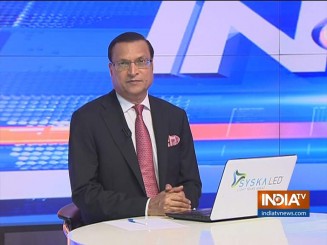 In a major breakthrough, Indian and Chinese troops began a step-wise disengagement from tension points at Line of Actual Control in eastern Ladakh after a two month-long stand-off in Galwan valley, Pangong lake and Gogra-Hot Springs.
In a major breakthrough, Indian and Chinese troops began a step-wise disengagement from tension points at Line of Actual Control in eastern Ladakh after a two month-long stand-off in Galwan valley, Pangong lake and Gogra-Hot Springs.
The Chinese troops removed tents and were seen moving back towards Finger 5 at Pangong Lake, while in Galwan Valley, a ‘buffer zone’ has been created at Patrolling Point 14, the site of bloody clashes on June 15, in which 20 Indian jawans and officers were martyred and a large number of Chinese soldiers were killed. The Chinese troops have moved back nearly two kilometres. In Gogra-Hot Springs area, similar disengagement is going on at friction points near Patrolling Points 15 and 17A.
The picture is now clear. Prime Minister Narendra Modi’s steel resolve to face the Chinese military build-up with a matching response from Indian armed forces has paid dividends. China, which had adopted a belligerent posturing for the last two months, has now calmed down, and its troops have begun withdrawing with their tents and armoured vehicles. To put it briefly, it was India which brought a full stop to the dispute that China had created by committing transgressions.
Never in the last six decades had the Chinese army got such a resolute response from the India. Prime Minister Modi’s tough message has gone down effectively, that India wants peace, but if its territorial integrity and sovereignty is attacked, it will strike back. There can be no compromise on this issue.
The Prime Minister has shown to the world how India can use its strategic, diplomatic and economic firepower to force the enemy to accept peace. The world has noticed how the leader of 1.3 billion Indians went to the border and stood before his jawans to deliver a tough message to China by giving a warning against any ‘expansionist’ designs.
It was in this context that the grounds of disengagement were set after a two-hour-long “frank and in-depth interaction”, marked by sharp exchanges, between National Security Adviser Ajit Doval and Chinese Foreign Minister Wang Yi on Sunday.
The two sides finally agreed over reduction of military presence at the trouble spots, pulling back of troops and dismantling of structures that were raised during the stand-off. India is practising extreme caution keeping a hawk’s eye over Chinese troop withdrawals with the help of drones and satellite pictures, and through physical verifications.
The setting up of “buffer zones” with no military presence at all friction points will mark the completion of Phase-1 of disengagement plan. This will be followed by a stabilization period of 3 to 4 weeks during which both sides will monitor the process and resolve if any fresh dispute arises. Further diplomatic and military level talks will be held for eventual de-induction of military build-up by both sides along the LAC in Ladakh. The final de-induction may take place by September or October this year.
Prime Minister Modi has effectively sent a stern message to China: whether it’s a map or app, if you cross the line, you will get a strong response, because this is New India, and the Indian government knows to strike where it hurts the most. After Modi’s sudden visit to Ladakh, the Chinese side sat up and took notice of how India has changed, whether it is Doklam or the Galwan valley.
Secondly, by giving the “self-reliance” (atmanirbhar) call, Modi put tremendous economic pressure on China, whose companies were raking in profits through 59 social media apps, and by making investments in Indian start-ups. A nationwide call was given to boycott Chinese products, and the harried Chinese companies had to tell their government to halt tension and start the peace dialogue. The Chinese companies were staring at a $ 50 billion loss because of the steps taken by the Indian government. All their plans for expansion and investment in India had dashed to the ground through a single “digital strike”.
Credit must also go to the personal chemistry developed with world leaders by Prime Minister Modi during his summits with the US, Russia, France, Germany, Britain, Japan and Israel. These countries came out in full support of India during the stand-off against China. It was this web of diplomatic finesse that caught the Chinese inside it. China also came to realize that it had only ‘failed’ countries like Pakistan and North Korea to stand by it during this stand-off. The major world powers had openly sided with India, and were speaking out openly against China.
Moreover, China is in a running feud with at least 23 neighbouring countries in East and South East Asia. The Chinese decided to bend not only because of worldwide support for India, but because of the rising economic and military power of India, which is going ahead fast in developing infrastructure at the Chinese border.
The main Chinese grouse was over India carrying out construction activity near the Galwan valley. China wanted India to stop construction of roads and bridges, but India refused to budge. India has not only built roads and bridges, but also airstrips near the LAC, like the one at Daulat Beg Oldie, where huge Indian transport aircraft can make easy landing. With easy connectivity by India with Ladakh and other border areas, the Chinese find that the overall Indian outlook has now changed. India is no more timid and cannot be browbeaten.
Lastly, Prime Minister Modi succeeded in making the Chinese troops go back because the entire nation stood rock solid behind his leadership. It is in times of such crises that the true mettle of leadership is tested.
Click Here to Watch Full Video | Get connected on Twitter, Instagram & Facebook